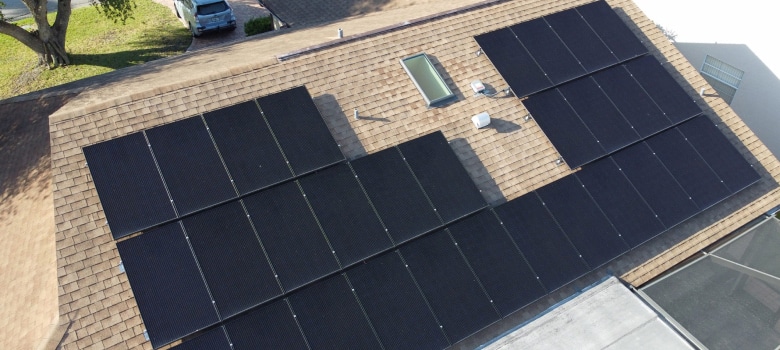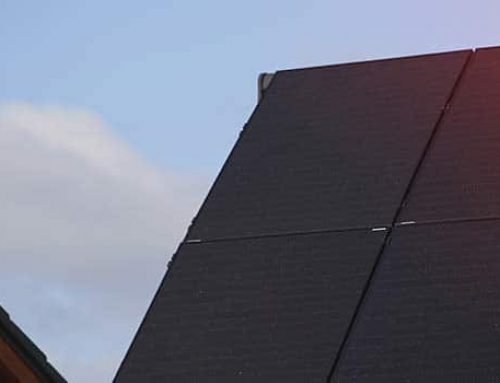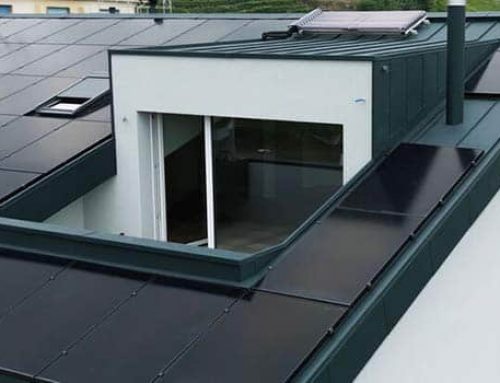One of the major attractions of making the switch to renewable energy is the chance to slash your energy bill.
So, how much money can you expect to save?
Whether you’re looking to invest in a new solar powered system for your home, or you’re looking to make sure your current savings are as strong as possible, a little knowledge goes a long way.
In this article, we’ll delve into the factors influencing solar panel output and ways to maximize their efficiency in the (sometimes) sun-soaked city of Adelaide.
So, let’s explore how panels can power a brighter future and, more importantly, help keep rising energy costs down.
Adelaide’s Exciting Renewable Energy Potential
On average, Adelaide receives approximately 3,000 hours of sunshine annually, providing an excellent opportunity for solar panels to capture sunlight and convert it into usable electricity.
However, the actual output of a solar panel depends on several factors, including the panel’s efficiency, orientation, shading, and local weather patterns.
Factors Influencing Solar Panel Output
Solar Panel Efficiency: The efficiency is a crucial factor in determining their output. Higher efficiency panels can convert a larger percentage of sunlight into electricity. Technological advancements have led to the development of more efficient panels, resulting in improved energy generation.
Orientation and Tilt: The direction and tilt angle of panels significantly impact their performance. In the southern hemisphere, panels facing north typically receive the most sunlight throughout the day. Properly angling the panels to match the local latitude maximises their exposure to sunlight.
Shading: Shading from nearby buildings, trees, or other obstacles can reduce the solar panel output. It’s essential to install panels in locations where they are not obstructed by shadows to ensure optimal performance.
Temperature: The panels are more effective in cooler temperatures. High temperatures can slightly decrease their efficiency, so the hot summers in Adelaide may have a minor impact on output.
Local Weather: While Adelaide enjoys a predominantly sunny climate, there will still be variations in weather conditions throughout the year. Cloudy days or rainy periods may temporarily reduce the solar panel’s output.
How to Calculate Solar Panel Output
To estimate the output of a solar panel system in Adelaide, you need to consider its size, efficiency, and other factors mentioned above. Typically, the solar panel output is measured in kilowatt-hours (kWh) of electricity generated per day.
For instance, let’s consider a 5-kilowatt (kW) solar panel system with an average efficiency of 20%. On a sunny day in Adelaide, this system can generate approximately 20-25 kWh of electricity. Keep in mind that this value is an estimate, and the actual output can vary depending on weather conditions and other influencing factors.
Solar Panels Benefits
✔ Renewable Energy: Solar power is a clean and renewable energy source that helps reduce greenhouse gas emissions, combating climate change and promoting environmental sustainability.
✔ Cost Savings: By generating their own electricity, panel owners can reduce their reliance on the grid, leading to significant cost savings on energy bills.
✔ Government Incentives: In Australia, there are various government incentives and rebates available to encourage the adoption, making it more affordable for homeowners and businesses to invest in renewable energy.
✔ Increased Property Value: The panels can enhance the value of a property, making it more attractive to potential buyers.
How to Maximise Solar Panel Output
While Adelaide’s sunny climate provides an excellent foundation for renewable energy generation, there are additional steps you can take to maximise the output of your solar panel system.
By optimising various aspects of your setup, you can further harness the potential of renewable power for your home.
Here’s what we recommend.
1. Invest in High-Efficiency Panels
As mentioned earlier, the panel efficiency plays a vital role in determining their output. Consider investing in high-efficiency panels that can convert a greater percentage of sunlight into electricity. While these panels may have a higher upfront cost, they can provide better long-term returns by generating more electricity over their lifespan.
2. Choose the Right Panel Orientation and Tilt
The orientation and tilt angle of your panels significantly impact their performance. As Adelaide is in the southern hemisphere, facing your panels northwards will ensure they receive the most sunlight throughout the day. It’s essential to consult with an expert to determine the optimal tilt angle based on Adelaide’s latitude.
3. Regular Maintenance and Cleaning
Dust, dirt, leaves, and bird droppings can accumulate on the surface of the panels over time, reducing their efficiency. Regularly cleaning the panels and keeping them free from obstructions can make a noticeable difference in their output. It’s important to follow manufacturer guidelines while cleaning and, if necessary, seek professional maintenance services.
4. Consider Energy Storage Solutions
Energy storage solutions, such as solar batteries, allow you to store excess electricity generated during sunny periods for use during cloudy days or at night. By utilising energy storage, you can increase your self-consumption and reduce reliance on the grid further. This can be particularly beneficial during peak demand periods or power outages.
5. Time Your Energy Consumption
Being mindful of when you use electricity can also impact the effectiveness of your system. In Adelaide, the sun is strongest during the middle of the day. Therefore, scheduling energy-intensive activities, such as running the dishwasher or doing laundry, during peak hours can increase your self-consumption.
6. Explore Incentives and Feed-in Tariffs
The Australian government offers various incentives and feed-in tariffs to encourage solar adoption. Feed-in tariffs allow you to sell excess electricity back to the grid, providing an additional source of income. Research available incentives and tariff schemes in Adelaide to make the most of these opportunities.
7. Expand Your Solar Array
If your current system isn’t producing enough electricity to meet your needs, consider expanding your solar array. By installing additional panels, you can increase your energy generation capacity, especially if you have available roof space to accommodate more panels.
8. Educate Yourself on Energy Consumption
Understanding your energy consumption patterns can help you make informed decisions about your system. Monitor your electricity usage and identify areas where you can reduce wastage or implement energy-saving practices. Simple steps like switching to LED bulbs or using energy-efficient appliances can lead to significant energy savings.
9. Community Initiatives
Consider participating in community initiatives if you are unable to install panels on your property. Some organisations offer shared projects, where multiple individuals can invest in a solar farm and receive credits for the electricity generated by their share of the panels.
Make the Most of Renewable Power with Energy Buster
In Adelaide, the output of a solar panel can be considerable due to the city’s ample sunshine and favourable weather conditions.
By embracing renewable power, residents and businesses can contribute to a more sustainable future while enjoying the numerous benefits of reduced energy costs and potential financial incentives.
To make the most of your solar panel system in Adelaide, consider investing in high-efficiency panels, proper orientation, and regular maintenance. Exploring energy storage options and time-shifting your energy consumption can also optimise your renewable energy utilisation.
As technology advances and awareness grows, renewable power will likely play an increasingly significant role in meeting Adelaide’s energy needs. By staying informed and adopting renewable energy, you can join the movement towards a greener and more eco-friendly city.





![How to Monitor Solar Panel Output for Your Adelaide Home or Business [Simple Guide]](https://energybuster.com.au/wp-content/uploads/2023/09/How-to-monitor-solar-panel-output-in-Adelaide-01-500x383.jpg)
